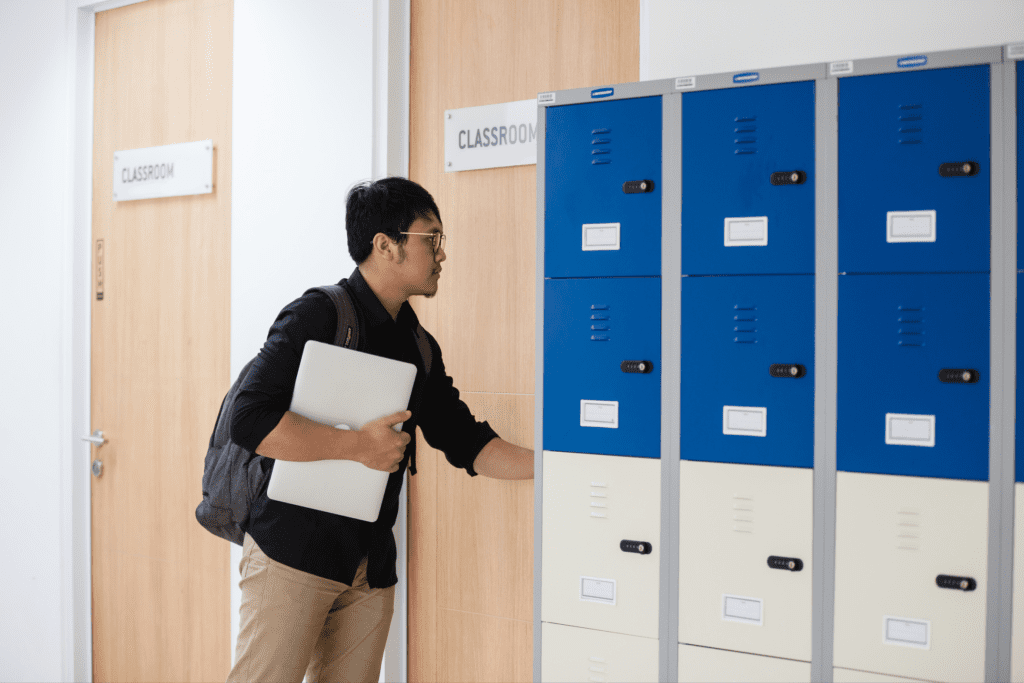No, because:
If you’re just starting out relief teaching in Australia, you will have a lot of questions. You will be thrown into the deep end at each new school that you go to, and often there is little that you can do to be prepared.
Because of this, whether or not you should bring your own device to schools is a common question to ask. After all, if you bring your own device you can be sure that you know how to use it and it will have all of your resources available to use.
However, there are many reasons why you shouldn’t bring your own device to a school:
You will be supplied with one.
Tech is becoming an increasingly important aspect of our lives. If you asked 10 or even 5 years ago, it might have been worth bringing a device to a school just in case. Today, there are laptops and tablets in every classroom, and each student will have access to their own device. Students will type far more than they will handwrite, and most of their work will be done on some kind of electronic device.
Because of this, every teacher in most schools across the country will have access to a device. A school cannot expect you as a relief teacher to deliver the intended learning program without giving you the tools to do so. If you are in a particular school that does not supply you with a device, it is safe to assume that this is the type of school where you wouldn’t need it anyway.
Your laptop may not connect to the school’s systems.
Each school will have particular systems that they use. They may all use Macs and iPads, or they may be a school that focuses on using Google or Microsoft Teams. Regardless of the details, every school will have preferences and systems built around the different platforms and programs that they use.
If you’re working for a public school, they often won’t allow just any device to connect to their networks. Even if the school-based tech team wants to, there are often measures that are put in place to prevent this. Many public school systems are also only allowing students and parents to use specific logins so that their access can be restricted and controlled.

While this may seem a little over the top, it is one of the many measures that schools put in place to keep our students as safe as possible while working online. The more control that a school has, the fewer risks we take when we use the internet or devices in class.
Aside from the network connection side of things, schools will have certain programs that they use. You may be left a note from a teacher asking you to go through a task in Education Perfect or to go through the slides that are on Google Classroom. If you don’t have a device that can access these things, you’re going to be in trouble. Schools can’t expect you to bring your own device and have everything that you need pre-installed, so they will always provide you with a device if you need one.
You want to limit which valuables you bring into a school.
This is something that a lot of relief teachers don’t consider. If you’re bringing your own device to a school, you are taking a risk.
Things get damaged in schools all the time. Many students do not respect their own devices and I’ve seen laptops dropped, thrown, and even bitten by students. Some studies have also shown that acts of aggression by students towards their teachers, which includes theft, have been increasing. Before you bring your own device into a school, you need to seriously consider whether this is a risk that you are willing to take.
I have been a relief teacher in some tough schools that did have individual teacher lockers in the staffroom. Every teacher, including the day’s relief teachers, would have a key to a locker where they could store their valuables so that they didn’t need to keep them in a classroom or in their shared office. This particular school had a significant problem with vandalism and teachers had had their valuables stolen by students before, and this was a good solution to help their staff feel safe. As a relief teacher who is in different schools every day, you cannot rely on this. You can’t even rely on having an office where you can lock up your valuables.
Is it really worth it?
There are benefits to bringing your own device such as knowing how to use it and having all of your teaching resources ready to print off and go, but the risks far outweigh the benefits. If the reason that you are bringing your device to a school is that it makes you feel safer and more prepared, you need to realise that this can be completely counteracted by the systems and processes of the school.
Some schools may ask you to bring your own device, but it is very rare. If you are using it as something that makes you feel more secure, there are far too many things that could go wrong. You are far better off having a folder filled with a range of resources and plans that you could quickly photocopy in the morning rather than your own valuable device.





